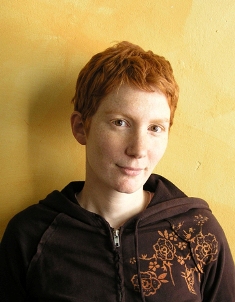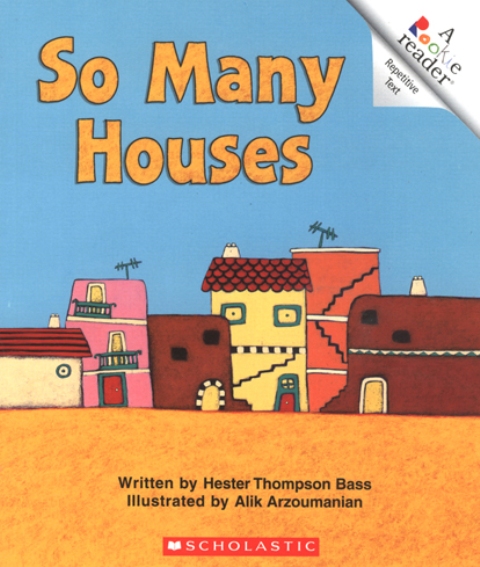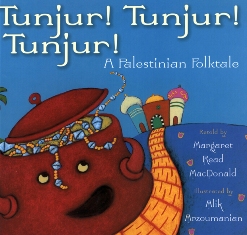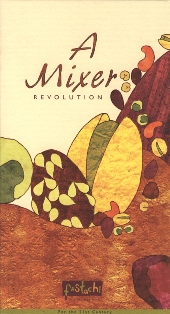
 Interview by Sylvia Bourdjian-Matta
Interview by Sylvia Bourdjian-MattaAzad-Hye Special
As young children we read books and fairy tales that help us expand our imagination and logic. Nowadays it has become rare to see a child or a teenager reading a book. Folk tales by Hovhannes Toumanian or the classical children stories are long forgotten. We need to find a way to pull our young generation back to reading.
Our guest is Alik Arzoumanian, illustrator of children books. She is born in Beirut, Lebanon where she has lived most of her life. She worked a short time for an irrigation company in Dubai (United Arab Emirates), an experience which made her realize that she was in the wrong profession. Her plans to make a definitive change materialized when she met her husband, Sevag, with whom she later moved to the United States. There, she attended the Massachusetts College of Art.
Bold colors, playful patterns and iconic figures characterize her art, influenced by Armenian, Persian and Indian manuscript illuminations. The first children's book she illustrated, “Tunjur! Tunjur! Tunjur! A Palestinian Folktale” retold by Margaret Read MacDonald (Marshall Cavendish Children) received an ALA 2007 Notable Book Award. She has also illustrated “So Many Houses” written by Hester Bass (Scholastic Library Publishing). Recently she illustrated “Grateful Animals” by Sona Zeitlian (Abril Bookstore-Publishing / see Azad-Hye report here); a bilingual folktale book dealing with Armenian traditions and values in a multicultural society. She has designed the animal and human characters with a keen artistic sense, blending them cleverly with the story, thus enhancing the whole concept of the book. Her bright and dark color combinations reveal the intricacies of the fast-paced events in a folktale. Her precision and attention to details have generated a unique artistic output.
Although she is mainly interested in illustrating children's books, Alik has also created artwork for editorial and advertising purposes.
Our guest is Alik Arzoumanian, illustrator of children books. She is born in Beirut, Lebanon where she has lived most of her life. She worked a short time for an irrigation company in Dubai (United Arab Emirates), an experience which made her realize that she was in the wrong profession. Her plans to make a definitive change materialized when she met her husband, Sevag, with whom she later moved to the United States. There, she attended the Massachusetts College of Art.
Bold colors, playful patterns and iconic figures characterize her art, influenced by Armenian, Persian and Indian manuscript illuminations. The first children's book she illustrated, “Tunjur! Tunjur! Tunjur! A Palestinian Folktale” retold by Margaret Read MacDonald (Marshall Cavendish Children) received an ALA 2007 Notable Book Award. She has also illustrated “So Many Houses” written by Hester Bass (Scholastic Library Publishing). Recently she illustrated “Grateful Animals” by Sona Zeitlian (Abril Bookstore-Publishing / see Azad-Hye report here); a bilingual folktale book dealing with Armenian traditions and values in a multicultural society. She has designed the animal and human characters with a keen artistic sense, blending them cleverly with the story, thus enhancing the whole concept of the book. Her bright and dark color combinations reveal the intricacies of the fast-paced events in a folktale. Her precision and attention to details have generated a unique artistic output.
Although she is mainly interested in illustrating children's books, Alik has also created artwork for editorial and advertising purposes.
Below is the text of the interview
Please introduce Alik Arzoumanian and her world to the readers.
A desk in my bedroom is my studio. My images are always somehow related to words and stories; I guess that?s why I am an illustrator and not an abstract painter. I enjoy the process by which a blank piece of paper becomes a whole new world. If I had to describe my world in one word, that would be ?color?. For me, painting is sometimes just an excuse to play with colors, that?s pretty abstract, isn?t it? Oh well, we?re all full of contradictions? Apart from color, I love sushi and Mexican folk art, among many other things. I don?t like pets (except turtles and fish!) and I despise most politicians. I don?t think that?s very illuminating, but it?s a small window into ?my world?.
A desk in my bedroom is my studio. My images are always somehow related to words and stories; I guess that?s why I am an illustrator and not an abstract painter. I enjoy the process by which a blank piece of paper becomes a whole new world. If I had to describe my world in one word, that would be ?color?. For me, painting is sometimes just an excuse to play with colors, that?s pretty abstract, isn?t it? Oh well, we?re all full of contradictions? Apart from color, I love sushi and Mexican folk art, among many other things. I don?t like pets (except turtles and fish!) and I despise most politicians. I don?t think that?s very illuminating, but it?s a small window into ?my world?.
Your beginnings? how did it occur to you to study Fine Arts when you were already a graduate of Agriculture science?
I always wanted to write and illustrate children?s books. Science never satisfied me and I was feeling pretty miserable in that track. I am very grateful that I had the chance to pursue my desire to become an illustrator.
I always wanted to write and illustrate children?s books. Science never satisfied me and I was feeling pretty miserable in that track. I am very grateful that I had the chance to pursue my desire to become an illustrator.
Who has influenced you more in your art? We notice your characters are very unique and at the same time boldly colored, in contrast to the pastel shaded children characters we usually see.
I look at Armenian, Persian and Indian manuscript illuminations for inspiration, patterns, color and characters. I also spend a lot of time in the children?s book section in any library I happen to visit. I disagree that children?s characters are usually ?pastel shaded?. The world of children?s book illustration is as varied as there are illustrators around us, ranging from the very delicate and subtle to the very bold and unconventional. At this point, I guess my work is somewhere in between, but it is always evolving.
What message do you want to convey through your characters?
I honestly have no important message to convey through any of my paintings, or writings for that matter. That is not to say I am against art that has a message. I just don?t do that.
I honestly have no important message to convey through any of my paintings, or writings for that matter. That is not to say I am against art that has a message. I just don?t do that.
Tell us about the ?Fastachi? and their catalogue which awarded you the 2004 NEDMA Silver award. ?Fastachi? is a gourmet nut store managed and owned by my husband?s cousin and his wife, Souren and Susan Etyemezian. A few years ago I did the illustrations for their catalogue, which won a local design award. The illustrations were made first in pencil and then colored in digitally. The process was very different from painting, which is what I like to do best, but I enjoyed the experience.
Where have you exhibited so far? And do you intend to do exhibitions in the Middle East?
I have participated in a few group exhibitions and have been offered to exhibit in Boston, but I haven?t had an exhibition worth mentioning yet. I am currently working on a children?s book in Armenian, and I plan to have some kind of ?book tour? in the Middle East once it is published, and perhaps that will include an exhibition of my work.
I have participated in a few group exhibitions and have been offered to exhibit in Boston, but I haven?t had an exhibition worth mentioning yet. I am currently working on a children?s book in Armenian, and I plan to have some kind of ?book tour? in the Middle East once it is published, and perhaps that will include an exhibition of my work.
Besides illustrating I?ve noticed that you also teach. Tell us about that experience.
I have been teaching elementary school art for six years and I have to admit teaching has its ups and downs. Most of the time, it is a greatly rewarding experience. Seeing children create in such an uninhibited manner and get excited about things adults take for granted is very refreshing, especially for a children?s book illustrator. But sometimes the physical aspect of the job becomes too exhausting and consuming. Whenever I feel ready to quit, however, I remember the children who have told me they want to become artists when they grow up. What more can I ask for, when most of the kids I used to talked to, dream about becoming engineers, doctors, and real estate agents?
I have been teaching elementary school art for six years and I have to admit teaching has its ups and downs. Most of the time, it is a greatly rewarding experience. Seeing children create in such an uninhibited manner and get excited about things adults take for granted is very refreshing, especially for a children?s book illustrator. But sometimes the physical aspect of the job becomes too exhausting and consuming. Whenever I feel ready to quit, however, I remember the children who have told me they want to become artists when they grow up. What more can I ask for, when most of the kids I used to talked to, dream about becoming engineers, doctors, and real estate agents?
I recently started teaching at the Massachusetts College of Art and that?s a very different experience; more challenging intellectually and less so physically. Reviewing the work of college students helps me in becoming more critical of my own work.
What future projects do you have in mind?
I want to publish the Armenian children?s book which I have written and illustrated as I mentioned before, and that will hopefully be the beginning of many others that are sitting in my notebooks waiting to be illustrated?
I want to publish the Armenian children?s book which I have written and illustrated as I mentioned before, and that will hopefully be the beginning of many others that are sitting in my notebooks waiting to be illustrated?
Azad-Hye wishes all the best to Alik and hopes that she would find time to publish her stories so that our children would be attracted again to books and literature instead of being obsessed with computer games.
For those interested in Alik's news, log on to www.alikart.com



